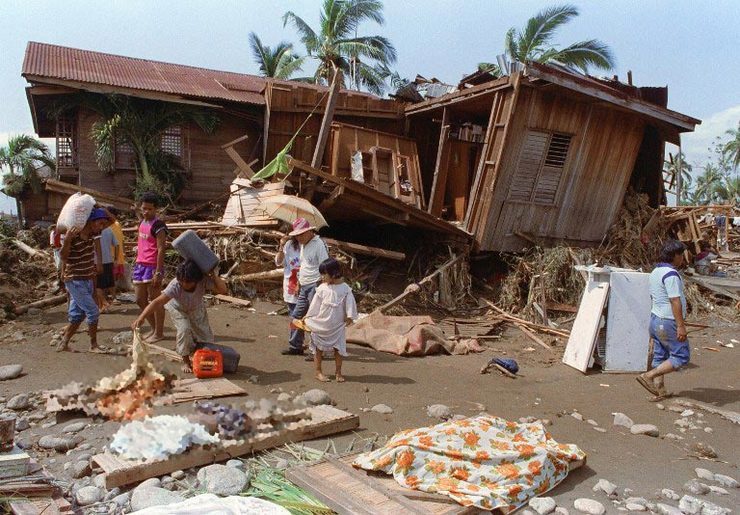SUMMARY
This is AI generated summarization, which may have errors. For context, always refer to the full article.

MANILA, Philippines – Twenty-three years ago on November 5, Typhoon Uring (international name Thelma) hit Eastern Visayas, causing intense flooding and landslides in the area.
It is the same region badly hit by Super Typhoon Yolanda (international name Haiyan) in 2013, also on a November.
In fact, in terms of casualties, Uring is third to Yolanda in the list of worst disasters in the Philippines. A 1976 earthquake in Mindanao, which killed 6,000 people, was second.
The massive flooding and landslides caused by Uring resulted in the death of also 6,000 people, most of them residents of Ormoc City, Leyte.
The flash flood
It was morning of November 5, 1991 when Uring brought heavy rain over Leyte, including Ormoc City. Various accounts said the rain caused a landslide that was lethal as it washed away huge logs – the product of illegal logging activities on the mountain.
Many people immediately blamed illegal logging as the major cause of the Ormoc tragedy, but the report of the Manila Observatory’s Environmental Research Division (ERD) shows that there were other factors that caused the disaster.
Instead of affecting a wider area in Eastern Visayas, the rain brought by Uring was concentrated on a mountain range, which includes the Ormoc watershed.
Also, the island of Leyte was formed by volcanic activity, and its central part is classified as a volcanic terrain. Soil in this area is unstable and highly susceptible to soil erosion and transport.
In the critical 3 hours of rain during Uring, the soil in the Ormoc watershed breached its capacity to hold water.
Moreover, by that time, only 3.3% of the Ormoc watershed was classified as timberland, while 96.7% was alienable and disposable land open to private use. The larger area, according to ERD, is used for commercial sugarcane production, coconut plantation, lowland rice field irrigation, pasture, or conserved for fallow.
Lastly, Isla Verde, a delta of alluvial deposits within the city, was allowed to be heavily populated despite it being a high-risk area. This area was devastated and many people were killed by flash floods.
Debris from poorly-constructed infrastructure also contributed to the clogging and flooding in the city.
What has been done
In response to this disaster, the Japan International Cooperation Agency (JICA) conducted various projects for flood mitigation in the city. This included a development study in 1993, the construction of bridges and slit dams from 1997 to 2001 for landslide reduction, and the improvement of the drainage of the major rivers of the city. Slit dams help control sedimentary and debris flows.
When Ormoc City was hit again in 2003 by a typhoon equal in scale to Uring, the slit dams protected the residents from landslides and floating trees, hence no casualties were recorded. In 2013, when Yolanda struck, JICA noted a significant drop in the number of casualties in Ormoc as compared to Uring.
Also, reforestation projects in the Ormoc watershed were done by the municipal local government units every year after the 1991 incident, according to Bienvenido Matiga, public affairs officer in Ormoc City.
As early as 1998, Geographic Information System (GIS) was used by the city government. Since then, many infrastructure and housing projects were built, and roads were widened.
In September 2013, the Department of Environment and Natural Resources (DENR) named Ormoc Bay, which includes its watershed and tributaries, as a water quality management area. DENR Secretary Ramon Paje said this led to the formulation of a comprehensive management program to protect the water body. – Rappler.com
Add a comment
How does this make you feel?
There are no comments yet. Add your comment to start the conversation.